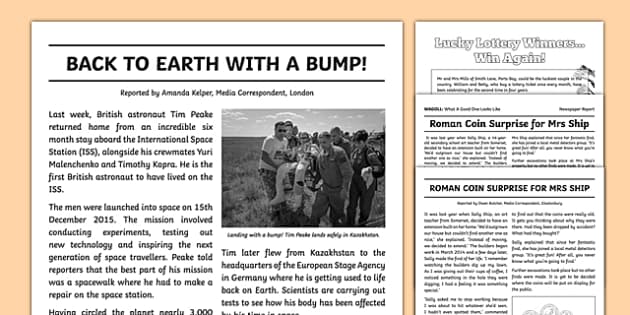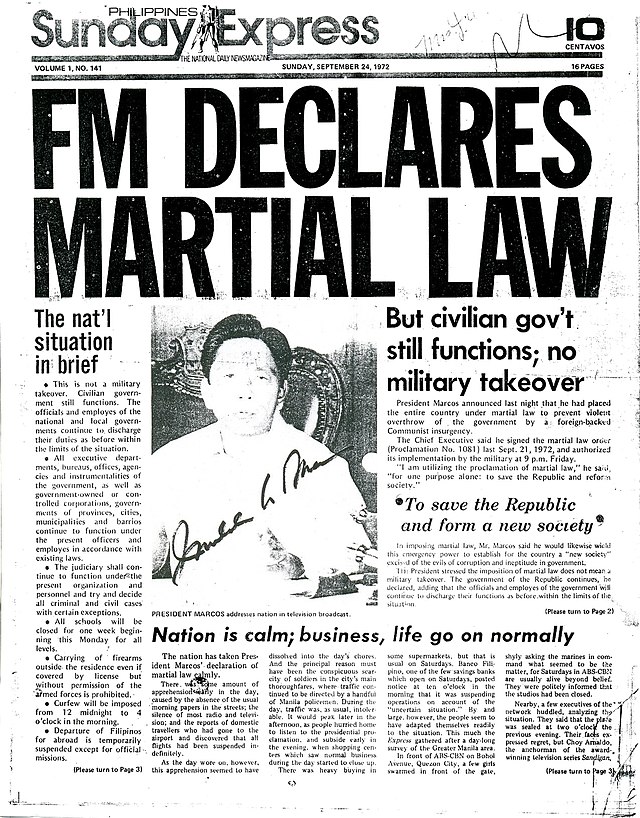Little Known Facts About News Articles.
Little Known Facts About News Articles.
Blog Article
The Best Strategy To Use For News Articles
Table of ContentsThe Buzz on News ArticlesA Biased View of News ArticlesThe Basic Principles Of News Articles What Does News Articles Mean?Our News Articles Statements
Good expertise of different subjects gives students an one-upmanship over their peers. Also though electronic and social networks are easily accessible, we must not forget just how essential it is to read the newspapers. Parents have to attempt and instill the routine of checking out a paper as a day-to-day routine to continue the legacy of the adored print tool.Newspaper article likewise contain at the very least one of the complying with essential qualities relative to the intended target market: closeness, importance, timeliness, human passion, peculiarity, or effect. The associated term journalese is occasionally made use of, normally pejoratively, to describe news-style writing. One more is headlinese. Newspapers generally abide by an expository writing style.
Within these limitations, news tales also aim to be comprehensive. Other aspects are entailed, some stylistic and some derived from the media kind. Among the larger and a lot more highly regarded papers, justness and equilibrium is a significant variable in providing information. Commentary is usually constrained to a separate area, though each paper may have a different overall slant.
Newspapers with a global target market, for example, have a tendency to utilize an extra formal style of creating. News Articles.; usual design guides include the and the US News Design Publication.
The 6-Minute Rule for News Articles
As a rule, journalists will certainly not use a long word when a brief one will certainly do. News writers attempt to stay clear of using the very same word more than as soon as in a paragraph (sometimes called an "resemble" or "word mirror").
Nevertheless, headings in some cases leave out the topic (e.g., "Leaps From Watercraft, Catches in Wheel") or verb (e.g., "Feline female fortunate"). A subhead (likewise subhed, sub-headline, subheading, subtitle, deck or dek) can be either a subordinate title under the major headline, or the heading of a subsection of the write-up. It is a heading that comes before the main message, or a group of paragraphs of the main message.

of a short article topic, source, or interviewee), it is described as a drawn quotation or pull quote. Added billboards of any one of these types may appear later on in the short article (especially on succeeding web pages) to lure further reading. Journalistic sites in some cases make use of animation methods to exchange one billboard for another (e.g.
Unknown Facts About News Articles
Such billboards are likewise used as reminders to the post in other areas of the publication or website, or as advertisements for the item in other publication or websites. News release of the Swiss federal government. Common framework with title, lead paragraph (summary in bold), other paragraphs (details) and call information.

Example of a hard-lead paragraph NASA is recommending another area job. The company's budget request, revealed today, consisted of a plan to send one more goal to the Moon. This time around the firm wants to establish a lasting center as a jumping-off place for other room adventures. The budget requests around $10 billion for the job.
An "off-lead" is the second most crucial front web page news of the day. To "bury the lead" is to start the write-up with history info or information of additional importance to the visitors, requiring them to check out more deeply into a short article than they ought to have to in order to find the necessary points.
The 30-Second Trick For News Articles
Usual usage is that or more sentences each form their very own paragraph. Journalists typically explain the organization or structure of a newspaper article as an inverted pyramid. The crucial and most fascinating aspects of a story are placed at the start, with supporting details adhering to in order of lessening importance.
It allows individuals to discover a topic to only the deepness that their inquisitiveness takes them, and without the charge of information or subtleties that they can consider irrelevant, however still making that info readily available to much more interested visitors. The upside down pyramid Read Full Report framework additionally enables articles to be cut to any kind of arbitrary length throughout design, to look at this now fit in the area offered.
Some writers begin their stories with the "1-2-3 lead", yet there are several kinds of lead available. A twist can refer to numerous things: The last tale in the information broadcast; a "happy" tale to finish the program.
Longer posts, such as magazine cover articles and the items that lead the inside sections of a newspaper, are recognized as. Attribute tales vary from straight information in a number of ways.
An Unbiased View of News Articles
The reporter frequently information communications with meeting subjects, making the item much more individual. A feature's first paragraphs often associate a fascinating minute or occasion, as in an "unscientific lead". From the details of an individual or episode, its view quickly widens to abstract principles concerning the story's subject. The section that signifies what a feature has to do with is called the or signboard.

The Editor's Toolbox: A Referral Guide for Beginners and Professionals (2001) Allan M. Siegal and William G. Connolly. The New York Times Handbook of Design and Usage: The Authorities Style Guide Utilized by the Writers and Editors of the Globe's Many Authoritative Paper (2002) M. L. Stein, Susan Paterno, and R.
Report this page